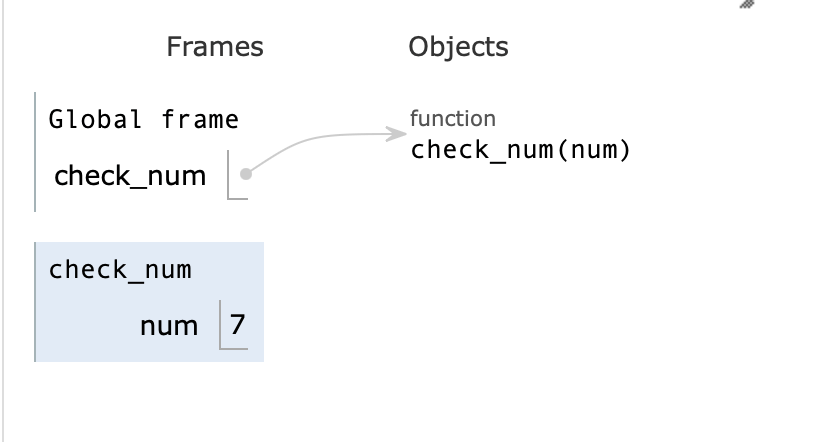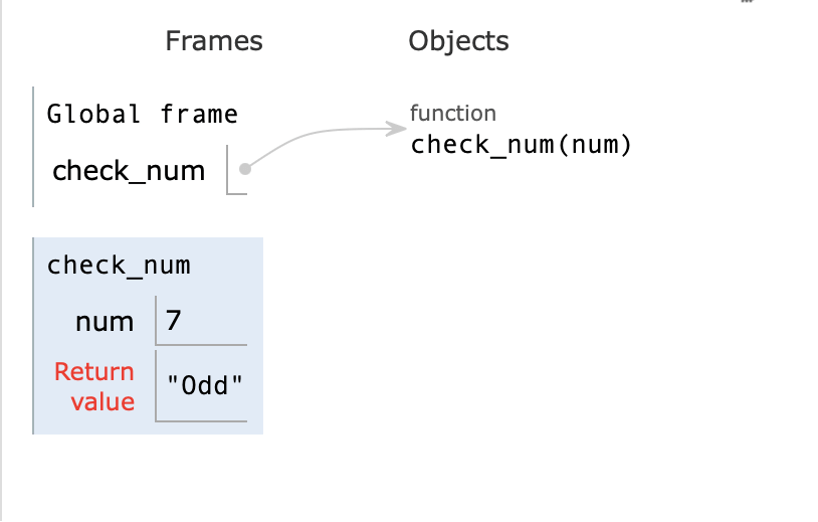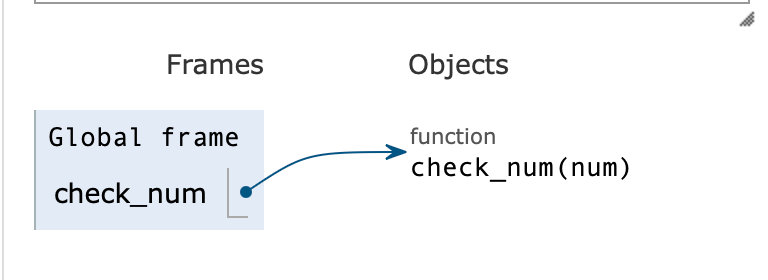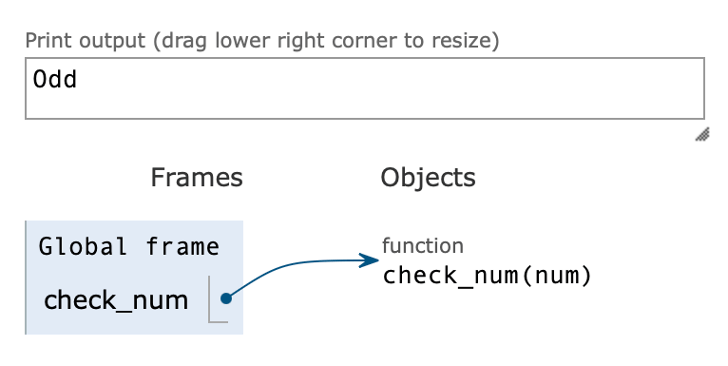Ever wondered what actually happens under the hood when you run your function code in Python?
In this blog, I am going to walk you through, from the moment you call a function to when it finish its execution what actually happening under the hood. When I learned about this topic, I have made detailed notes to help myself understand this better, and now I’m excited to share my knowledge with you in this blog,
Let’s take an example of a function which returns whether a given number is odd or even.
def check_num(num):
"""This function returns,
whether a given number is odd or even"""
if num %2 == 0:
return 'Even'
else:
return 'Odd'
print(check_num(7))
Now, let’s understand how above function gets executed in memory step by step,
Step 1: Defining the Function
When python reads this line,
def check_num(num):
Python doesn’t starts executing check_num() function yet, instead it store the function object in memory, just like saving a recipe for later use. At this point, Python knows there’s a function check_num() which takes a parameter num, but yet python doesn’t run the code written inside our function.
Think of it as, installing an app in your mobile phone, when installed, an icon appears on your home screen. That icon is like defining the function, it’s ready to run, but the app only starts when you click the app icon, just like calling the function.

Step 2: Calling the Function
Now, python directly reach to last line,
print(check_num(7))
Here, we are calling our function check_num(), passing 7 as an argument. When the function call happens, python creates a new box (separate memory block) for check_num() also know as stack frame.
Inside this stack frame, python stores the pass argument like this,

Now, the check_num() function code will be executed independently inside this created stack frame.
You might have question in you mind,
🤔 Why does Python create an separate stack frame for a function, instead of just running it in global frame?
Suppose your computer RAM as a city then,
- The global frame where your main program runs, a house inside this city.
- Then, every time when you call a function, python creates a separate room inside the house (stack frame).
- Now, this room has its own variables, separate from rest of house.
Note: If we call more functions, then python will create more rooms, each with their own separate memory block (stack frame)
Step 3: Executing the Function
Once the check_num() function is called, now python begins to executing inside code line by line inside the new created separate stack frame.
if 7 %2 == 0:
return 'Even'
else:
return 'Odd'
Since, 7% 2 not equal to 0, the condition becomes false. So python, skips to else block and return ‘odd’ back to main program.

At this point, the check_num() finished executing and returns ‘Odd’ to global frame, so python destroys the stack frame created for this function and also the local variables inside the frame, num deleted from the memory.

1. What's the lifespan of a function in memory?
Answer: A function becomes active in memory (stack frame) only during the time the function is called and until it returns a value. Outside of this period, the function does not exist in memory.
2. What about variables lifespan inside a function?
Answer: Variables defined inside a function, like num, only exist during the function execution. Once the function execution finishes, these inside variables are automatically destroyed from memory.
Step 4: Printing the Result
Finally, the print(check_num(7)) statement becomes, print(‘Odd’) and the output printed on the screen,

And, this is how your written function code gets executed in memory, from definition, to call, to memory allocation, to execution and finally printing the result.
Comments